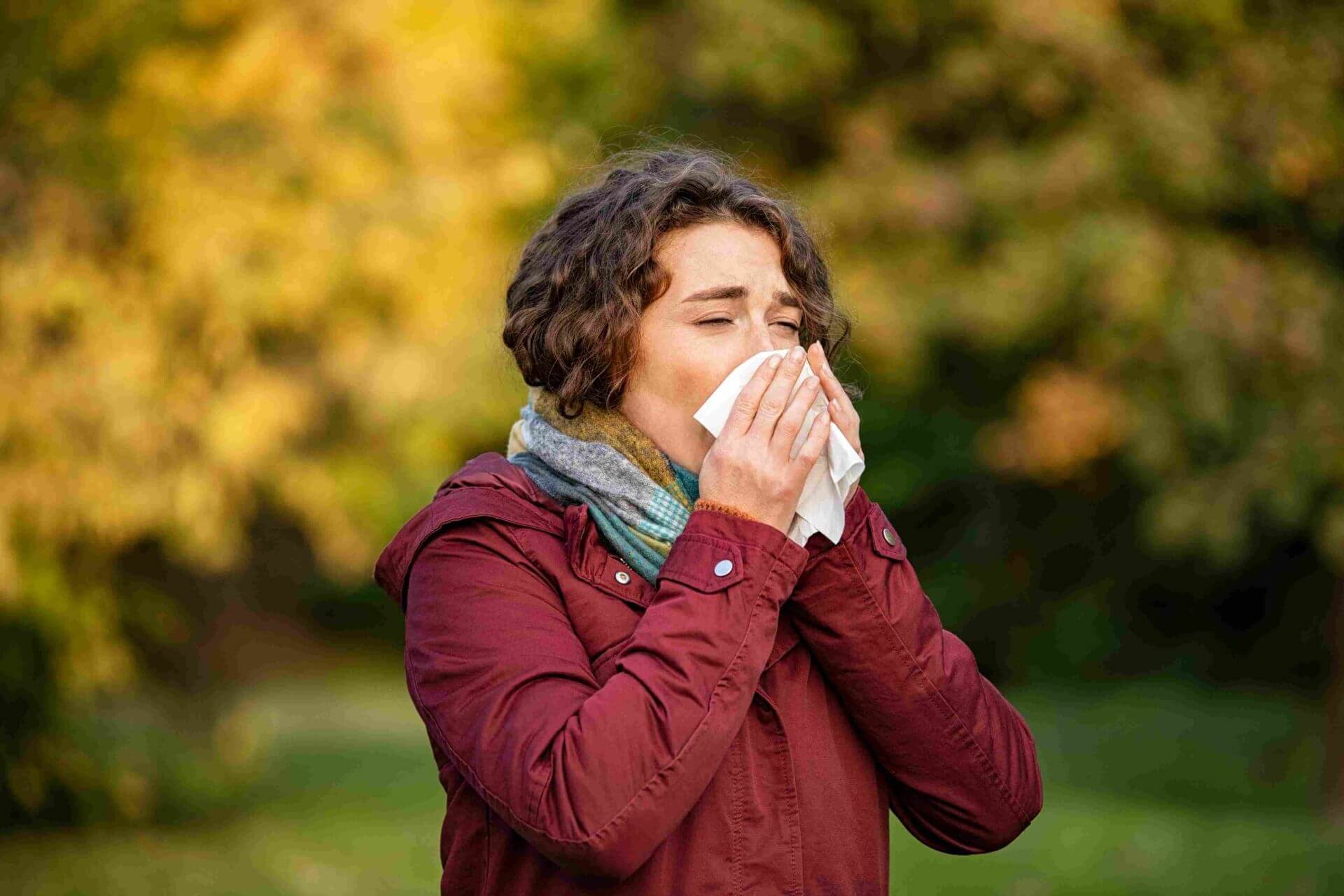While we may welcome the start of fall because of its beautiful colors, cooler weather, and holidays, the one unwelcome part for many is fall allergies. For those that suffer from seasonal allergies, fall can signal the start of bothersome symptoms like a runny or stuffy nose along with headaches. Here is your guide to fall allergies, including an explanation of what they are, symptoms, how to get a diagnosis, and things you can do to reduce symptoms.
When do fall allergies start?
Fall seasonal allergies, also known as allergic rhinitis, usually start around mid-August to early September. This can vary based on location and can even vary from one year to the next within the same location based on that year’s temperatures.
What causes allergies in the fall?
Each season carries different predominant allergens in the air. With fall, these allergens include ragweed, mold, mugwort, and others. With plants and trees, the culprit is fall pollination. While many pollinate earlier, causing spring or summer allergies, some species wait until fall, and it’s those species’ pollen that fills the air and triggers allergies. Piles of fallen leaves form an ideal breeding ground for mold.
Symptoms of fall seasonal allergies
Symptoms include: watery, runny nose, stuffy nose (nasal congestion), watery or itchy eyes, sneezing, headaches, rashes on the skin, post-nasal drip, coughing, or an itchy throat. If these symptoms start around the beginning of fall, you may have seasonal allergies. Your doctor or an ENT can perform a test to diagnose you and find out what your predominant allergens are. Once you know that you have fall allergies, there are some things you can do to reduce your exposure and treat symptoms for some relief.
How to stop allergies
There are some things you can do to help fall allergies. It’s best to take a two-pronged approach: Reduce your exposure to things that cause fall allergies and take or do something to reduce symptoms you experience as a result of fall allergies. Let’s go into each in more detail.
How can you avoid fall allergies?
There are some steps you can take to reduce your exposure to allergens in the fall. Consider getting a HEPA air filtration system, which can help filter out pollen and mold spores. Running a dehumidifier can reduce the humidity in your house, helping as well. When you come indoors after being outside, change out of your clothes and set them aside to be washed. Keep windows closed to avoid letting in pollen and spores, which can pass through window screens.
To minimize mold growth outside, keep your yard free from collections of leaves. When raking leaves (especially wet leaves), you may stir up mold spores; wearing a mask that filters these out can help minimize symptoms. Also, if practical, avoid going outside on windy days, and watch the news or follow a website that shows your area’s pollen and spore counts to avoid going out if you can on days they will be high.
What can I take to reduce my symptoms?
Even following all of the steps above, you will still experience exposure to your allergens to some degree. There are some things you can do to minimize symptoms of fall allergies. Over-the-counter seasonal allergy medicine works for all seasons. These include tablet/liquid medication, nasal sprays, or eye drops. They often include nasal decongestants and antihistamines.
If allergy medication is not helping (after a while, allergy medication can and does lose effectiveness) or symptoms are chronic or severe, there are some procedures that can help with symptoms. If you’d like to learn more about why your seasonal allergy medications stopped working, you can learn more in our blog entry here.
Procedures that help with fall allergy symptoms
Clarifix is one such procedure that can help relieve fall seasonal allergy symptoms. It uses something called cryotherapy (cold therapy) to freeze the nerves that lead to a chronic runny nose. This is a highly effective procedure that can help with symptoms of post-nasal drip, congestion, and runny nose.
Balloon sinuplasty is another procedure that can help alleviate fall allergy symptoms. It uses a balloon inserted through the nose to drain and open up the sinus cavities. It can help with allergy symptoms such as congestion, cough, and headaches.
Both Clarifix and balloon sinuplasty are outpatient procedures, meaning they are done in your ENT’s office with no need for general anesthesia. They are also minimally invasive and require very little downtime.
If you are experiencing fall allergy symptoms despite taking steps to reduce exposure, reach out to Dr. Edmund Fisher’s office for further help. No one should have to suffer continually from bothersome symptoms, and you may be a candidate for one of the stronger procedures mentioned above.




